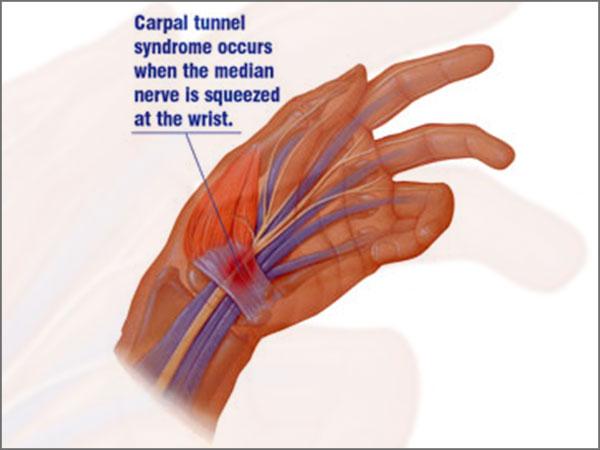
Carpal tunnel syndrome is a common condition that causes pain, numbness and tingling in the hand and arm. The condition occurs when one of the major nerves to the hand, median nerve is compressed at the wrist. The problem gets worse over a period of time and can lead to nerve damage and worsening symptoms.
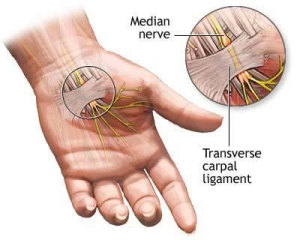 |
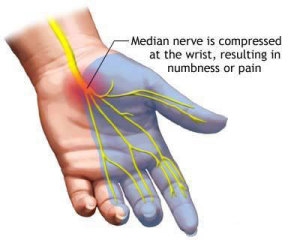 |
Anatomy:
The carpal tunnel is a narrow passage in the wrist. The carpal bones of the wrist form the floor and sides of the tunnel. A band of connective tissue called transverse carpal ligament forms the roof of the tunnel. The median nerve, an important nerve supply in the hand passes through the carpal tunnel in the wrist. This nerve provides the sensation to the thumb, index, middle and ring fingers. Carpal tunnel syndrome occurs when the tunnel becomes narrow or when tissues in the tunnel swell and compress the median nerve. This results in pain, numbness, tingling and weakness in the hand.
Causes:
Carpal tunnel syndrome occurs when the tunnel becomes narrowed or when tissues in the tunnel swell, putting the median nerve under pressure. This pressure results in pain, numbness, tingling and weakness in the hand.
Risk factors:
- Heredity: the carpal tunnel may be small in some people
- Repetition in hand use
- Abnormal hand and wrist position
- Pregnancy: due to hormonal changes
- Other condition like diabetes, rheumatoid arthritis and thyroid gland disorders
Symptoms:
- Numbness, tingling and primarily in thumb, index, middle and ring fingers
- Pain or tingling that may travel up to the forearm towards the shoulder
- Occasional shock like sensation in the thumb, index, middle and ring fingers
- Weakness and clumsiness in the hand
- Frequent dropping of things
- Symptoms begin gradually and are more common in nights. Many people may wake up from sleep due to symptoms.
- Moving or shaking of hands will relieve the symptoms.
Diagnosis:
- Proper clinical history and a detailed neurological examination
- Nerve conduction study and electromyography to see for the severity of compression
- MRI to look for the cause of compression.
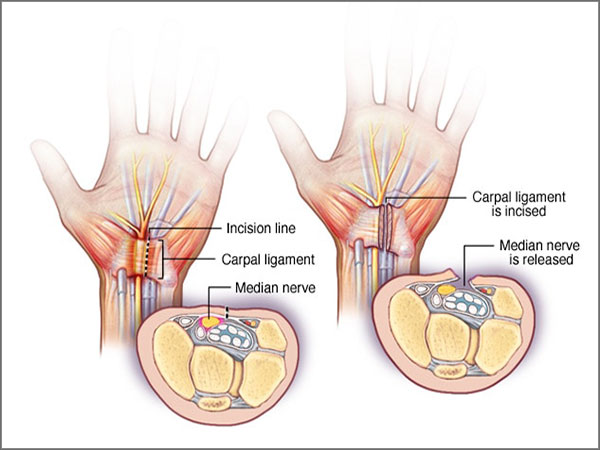
Treatment
- Bracing and splinting
- Pain medication
- Change in activity
- Steroid injections
- Nerve gliding exercises to make the median nerve move freely
- Surgery where the pressure on the median nerve is relieved by cutting the ligament that forms the roof of the tunnel. It is called carpal tunnel release. This is done by an open surgery or with an endoscope.
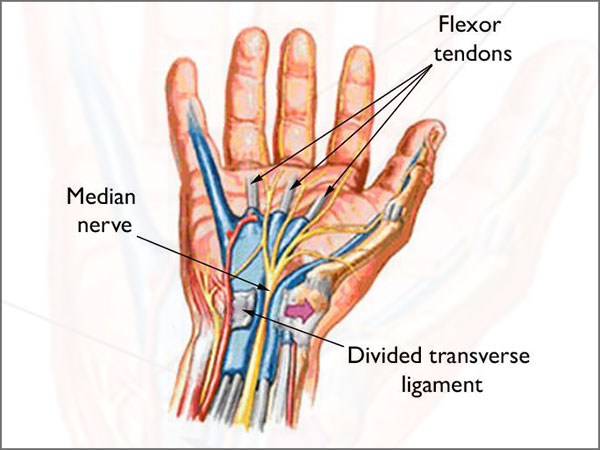 |
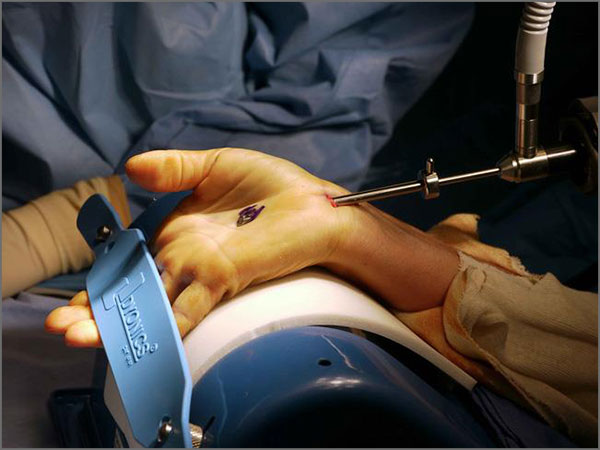 |


